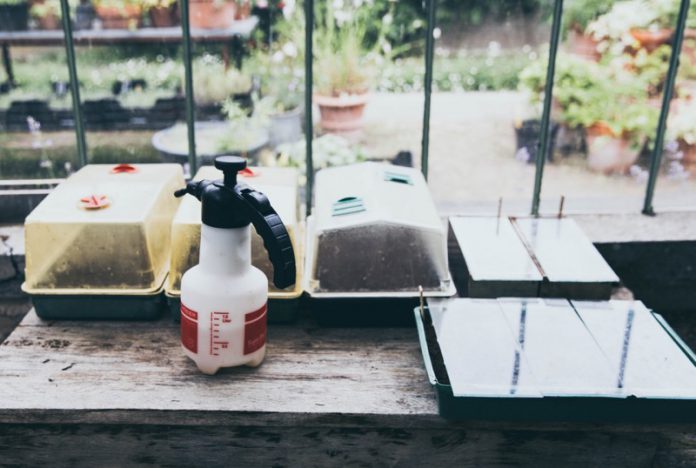Do you struggle with applying the best liquid solution for your herbicides? Let’s face it, watching liquid solution roll off the ends of the leaves of plants you are treating is the last thing you would like to see. A liquid herbicide that rolls off leaves is a waste of time, money, and effort. That’s the reason why you need a surfactant when treating your lawn with herbicide.
Every professional knows the importance of allowing an herbicide to soak in for maximum effectiveness. So, here’s a quick guide on how to use a surfactant and when to apply one.
What Is a Surfactant?
Simply put, a surfactant is a wetting agent that prevents herbicide from rolling off plants’ leaves, allowing absorption of the chemical applied. It works like a “buffer” that breaks the surface tension of the liquid, so the solution sticks better to the plant’s surface.
Plants naturally block water and chemical solutions through their waxy exterior and cuticle. Thus, a surfactant breaks down this resistance allowing the proper absorption of the herbicide that is applied to it.
When to Use a Surfactant
Firstly, a surfactant is not used alone. It must be used in combination with other liquid products like fungicides, fertilizers, insecticides, or, most frequently, with herbicides for weed control.
When treating your lawn weeds with a surfactant, you must:
- Determine the type of weed you would like to treat
- Get a selective herbicide labeled to control the specific weed you are experiencing
- Purchase a surfactant that works in combination with the herbicide or fertilizer you will apply
How to Use a Surfactant
There are two ways you can apply a surfactant:
- You can mix the surfactant with the herbicide in the same container and apply them simultaneously to the plant
- Or you can apply the wetting agent first and then follow it with herbicide spray
The mixing method, however, saves more time spent during application. Some herbicides and insecticides contain surfactants mixed with the active ingredient.
For example, when spraying a broadleaf weed, mix a surfactant with an herbicide so that the solution will stick to the surface better.
Which Surfactant You’ll Need
There are several types of surfactants that you can use for various applications—herbicide, insecticide, or fungicide.
Non-ionic surfactants are neutral, neither positively nor negatively charged. This type of surfactant is widely popular since its neutral charge reduces a reaction when mixed with chemical solutions.
Methylated seed oils, also known as MSOs, are soy-based surfactants that help penetrate waxy cuticles and reduce evaporation of the product.
Oil concentrates are specialty oils mixed with surfactants. The oil helps surfactants interact and mix with certain chemicals. They may be used with insecticides, fertilizers, or fungicides. Read the product label if your product can be combined with oil concentrate.
Many products that are used on plants, such as herbicides, have built-in surfactants. This formulation saves time and money.
Other Things to Remember
When using a surfactant, it’s important to read the product label and ask the following:
- Is this product safe to use on a specific plant?
- How much herbicide solution do I need to achieve the best results?
- Do I need a surfactant to apply this herbicide or pesticide?
- How much surfactant do I need?
Get the correct measurement or ratio of the herbicide and surfactant you will mix. You can check the label of the surfactant in case the herbicide label does not explicitly mention it.
Mix the solutions according to the product label’s instructions. You can either use a pump or backpack sprayer, depending on the product requirement.
What to Remember When Using a Surfactant
- We advise that you spray your mix of surfactant and herbicide directly onto the foliage of individual plants on all sides. Make sure to contact growing tips and bud terminals too.
- Timing is also crucial in the application. It is recommended that you apply herbicides when plants are actively growing. Ideally, it would be best if you treated plants during spring when they are emerging. The beginning of fall is also good since plants are storing up nutrients in preparation for winter.
- Don’t apply herbicides in drought or similar conditions that prevent plant growth. We highly discourage application during windy days, as the liquid herbicide can drift to desirable plants or in areas where children and pets might be. Keep the area clear for a few days to ensure safety.
- The best practice is always to wear protective gear when handling chemicals such as pesticides for lawn care.










































